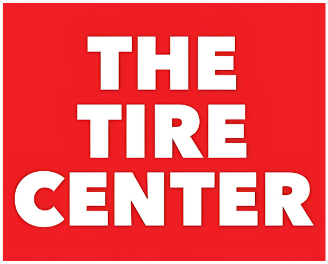How Wheel Alignment Affects Tire Noise and Ride Comfort
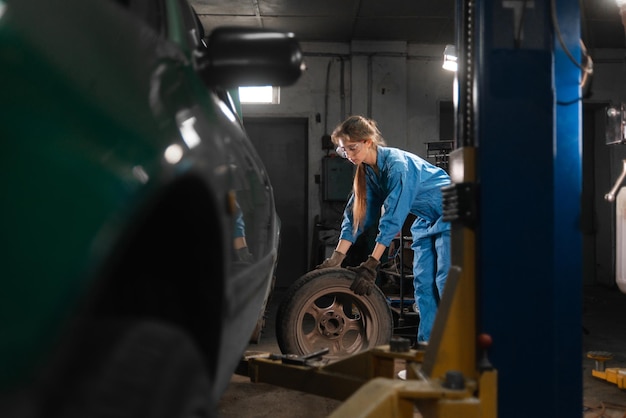
Most drivers know that wheel alignment helps with tire life and fuel efficiency, but what many don’t realize is how much it affects noise and ride comfort. That constant humming, droning, or vibration you feel in your seat or steering wheel might not just be worn tires—it could be a misalignment issue. At The Tire Center in Santa Ana, we often see customers frustrated by loud, uncomfortable rides, only to find the solution lies in something as simple as a proper alignment. Let’s explore how alignment plays a key role in reducing tire noise and keeping your ride as smooth as possible. What Exactly Is Wheel Alignment? Wheel alignment is the adjustment of your car’s suspension system, which connects the wheels to the vehicle. Alignment doesn’t adjust the wheels or tires themselves but rather the angles at which they meet the road. When the angles are correct, your car tracks straight, your tires wear evenly, and you get a quiet, comfortable ride. The main alignment angles are: Toe: The inward or outward angle of your tires when viewed from above. If your tires are “toed in” or “toed out” too much, they can scrub against the pavement and create excessive noise. Camber: The inward or outward tilt of your tires when viewed from the front. Incorrect camber can cause uneven wear patterns, which often lead to a droning or roaring noise as you drive. Caster: The angle of your steering axis when viewed from the side. While caster doesn’t directly affect noise, improper caster can impact steering stability, which adds to driver discomfort. Thrust Angle: This measures whether your rear wheels are aligned with the vehicle’s centerline. If they’re off, your car may feel like it’s crabbing sideways, producing vibration and noise. How Misalignment Creates Tire Noise When your wheels are out of alignment, they no longer make uniform contact with the road. Instead, certain parts of the tire’s tread bear more load than others. This uneven pressure leads to unusual wear patterns such as cupping, feathering, or scalloping. Here’s how these patterns translate into noise: Cupping: Produces a rhythmic thumping sound, often mistaken for a bad wheel bearing. Feathering: Creates a high-pitched humming or whistling noise that gets louder with speed. Scalloping: Leads to a low, droning vibration that makes highway driving especially uncomfortable. Not only is the noise annoying, but it’s also a warning sign that your tires won’t last much longer if the alignment issue isn’t corrected. How Alignment Influences Ride Comfort Comfort is about more than just the absence of noise. A properly aligned vehicle glides down the road with minimal effort from the driver. When alignment is off, you may experience: Steering Pull: The car drifts left or right, forcing you to constantly correct. Steering Wheel Vibration: Caused by uneven tire contact with the road. Rough Ride: Misalignment puts stress on suspension components, amplifying every bump and pothole. Fatigue: The constant need to fight the steering wheel makes long drives more tiring. When your wheels are aligned, your car feels balanced and predictable, reducing both driver stress and passenger discomfort. The Connection Between Alignment and Tire Longevity Noise and comfort issues are frustrating, but misalignment also shortens tire life significantly. A tire that could last 50,000 miles may wear out in half that distance if it’s constantly scraping against the pavement at the wrong angle. This means you’re not only dealing with a noisy, uncomfortable ride but also spending money on premature tire replacements. At The Tire Center, we often see vehicles with brand-new premium tires that are already showing uneven wear because the alignment was overlooked. Fixing alignment early is a much smaller investment than replacing a full set of tires. Signs Your Car Needs a Wheel Alignment Since alignment problems develop gradually, it can be tricky to know when service is needed. Look out for these common signs: Your steering wheel is crooked even when driving straight. The car drifts or pulls to one side. You feel vibrations through the wheel or seat. Tires show uneven tread wear. You notice unusual noises at certain speeds. If you’ve recently hit a curb, driven through a large pothole, or had suspension repairs, it’s smart to schedule an alignment check even if you don’t notice symptoms yet. How to Keep Your Ride Quiet and Smooth Longer While it’s impossible to completely avoid road hazards, you can take steps to extend the benefits of your alignment: Drive Carefully Over Rough Roads: Potholes, speed bumps, and debris are some of the biggest culprits for knocking wheels out of alignment. Get Regular Tire Rotations and Balancing: These services work hand in hand with alignment to keep wear patterns even. Check Tire Pressure Often: Underinflated or overinflated tires can amplify noise and create unnecessary strain. Schedule Routine Alignment Checks: Even if your car feels fine, it’s a good idea to have alignment inspected at least once a year or every 12,000 miles. Why Choose The Tire Center in Santa Ana At The Tire Center, we provide more than just alignments. We’re your one-stop shop for all things tires in Santa Ana. Whether you need a new set of premium tires, balancing to smooth out vibrations, rim repair to restore wheel performance, or a quick tire pressure check, our expert team has you covered. We work with all makes and models, so whether you drive a commuter car, SUV, or work truck, you’ll leave with a ride that’s quieter, smoother, and safer. Your tires and suspension are too important to ignore. If your car has been feeling noisy, rough, or just not as smooth as it used to be, don’t wait for the problem to get worse. Schedule your wheel alignment and tire service today with The Tire Center in Santa Ana to restore ride comfort, reduce tire noise, and get the most out of your tires. Call us now or book your appointment online.
How to Spot and Fix Uneven Tire Wear Before It’s Too Late
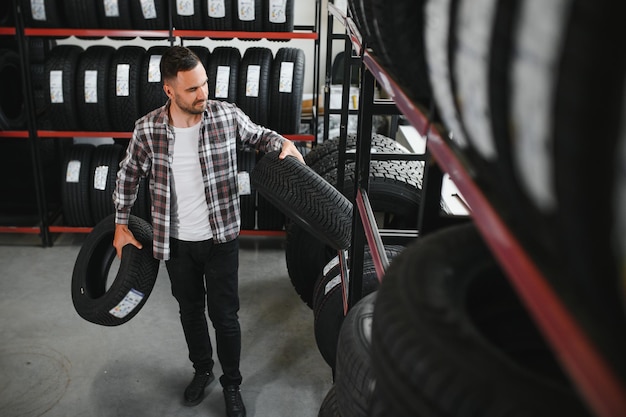
Most drivers don’t pay much attention to their tires beyond the occasional glance before hitting the road. But your tires are the only part of your vehicle that makes direct contact with the pavement, and when they start wearing unevenly, it’s more than just a nuisance. Uneven tire wear can reduce traction, shorten tire life, and even compromise your safety. The good news is that spotting the signs early and taking action can save you from costly repairs down the line. If you’ve ever noticed one part of your tire looking bald while the rest still has tread left, you’re not alone. This is one of the clearest signs of uneven tire wear. But why does it happen, and how do you fix tire wear before it becomes a major problem? Let’s break it down. What Is Uneven Tire Wear? Uneven tire wear occurs when one area of the tire tread wears down faster than the rest. Instead of an even, balanced pattern across the surface, you’ll see spots that are thinner, smoother, or more worn out. This issue isn’t just cosmetic—it signals that something is off with your vehicle’s suspension, alignment, tire pressure, or driving habits. Because tires are designed to evenly distribute weight and road contact, irregular tread wear disrupts their performance. As a result, you may notice rough handling, noisy rides, or even reduced fuel efficiency. Ignoring the problem only makes it worse, sometimes leading to premature tire replacement or dangerous driving conditions. Common Types of Uneven Tire Wear Patterns Understanding the type of tread wear your tires are showing can help you determine what’s causing the issue. Here are some of the most common patterns: 1. Center Wear When the tread in the middle of the tire wears faster than the edges, it usually means your tires are overinflated. Excess air pressure causes the center to bulge and make more contact with the road. 2. Edge Wear If the outer edges of the tire are wearing down while the center looks fine, underinflation is often to blame. Tires without enough air pressure put too much weight on the edges, leading to faster wear. 3. Cupping or Scalloping This type of wear looks like small dips or scalloped patterns across the tread. It’s typically a sign of suspension problems or unbalanced tires. Cupping can make your ride noisy and bumpy. 4. Feathering Feathered wear occurs when one side of the tread blocks is rounded and the other is sharp. This often points to poor alignment or worn suspension components. 5. One-Sided Wear If one side of the tire tread is significantly more worn than the other, your wheels may be out of alignment. It could also indicate a camber issue, where the wheels are tilted inward or outward. By paying attention to these patterns, you can get a head start on identifying the underlying issue before it affects all four tires. What Causes Uneven Tire Wear? Several factors can cause your tires to wear unevenly. Some are as simple as forgetting routine maintenance, while others may involve deeper mechanical issues. Here are the most common culprits: Improper tire pressure: Both overinflation and underinflation affect how your tire makes contact with the road. Poor wheel alignment: Hitting potholes, curbs, or simply everyday driving can knock your wheels out of alignment, leading to uneven tread. Unbalanced tires: If the weight isn’t evenly distributed across your wheels, your tires may develop vibration issues and irregular wear. Worn suspension parts: Components like shocks, struts, and ball joints help absorb road impact. When they wear out, your tires suffer the consequences. Driving habits: Aggressive braking, speeding over bumps, or cornering too sharply all put extra strain on your tires. Neglecting tire rotations: Failing to rotate your tires regularly allows some to wear faster than others, especially on front-wheel-drive vehicles where the front tires handle most of the work. How to Spot Uneven Tire Wear Early Catching uneven wear before it progresses is key to saving your tires. Here’s what you can do to stay on top of it: Perform regular visual checks: Take a few minutes each month to inspect your tires for bald spots, smooth patches, or worn edges. Use the penny test: Place a penny with Lincoln’s head facing down into the tread. If you can see the top of his head, your tread depth is too low. Check for vibrations while driving: If you feel your steering wheel shake at certain speeds, your tires may be unbalanced or wearing unevenly. Monitor your tire pressure: Keeping tires inflated to manufacturer recommendations helps avoid over- or underinflation issues. Listen for unusual noises: Whining, humming, or rumbling sounds could be signs of cupping or feathering on the tires. How to Fix Tire Wear Before It’s Too Late Once you’ve spotted uneven wear, the next step is addressing the root cause. Depending on the type of wear, solutions can range from quick fixes to more involved services: Adjust tire pressure: If uneven wear is due to over- or underinflation, correcting tire pressure can slow down further damage. Get a tire rotation: Rotating your tires every 5,000 to 7,000 miles ensures they wear more evenly across all four corners of your vehicle. Schedule a wheel alignment: Realigning your wheels to factory specifications corrects pulling, uneven wear, and handling issues. Balance your tires: Professional tire balancing redistributes weight across the wheels, preventing vibrations and scalloped tread patterns. Inspect suspension parts: Worn shocks, struts, or ball joints should be replaced to prevent further uneven wear. Replace severely worn tires: If the tread is already dangerously thin or compromised, replacing the tires may be the safest choice. The most effective way to fix tire wear is to combine proper maintenance with expert care. A professional tire shop can diagnose the exact cause and perform the right services to restore your tires and prevent premature replacement. How to Prevent Uneven Tire Wear in the Future The best cure is prevention. Here are some habits and services that
How Regular Tire Maintenance Can Prevent Costly Repairs
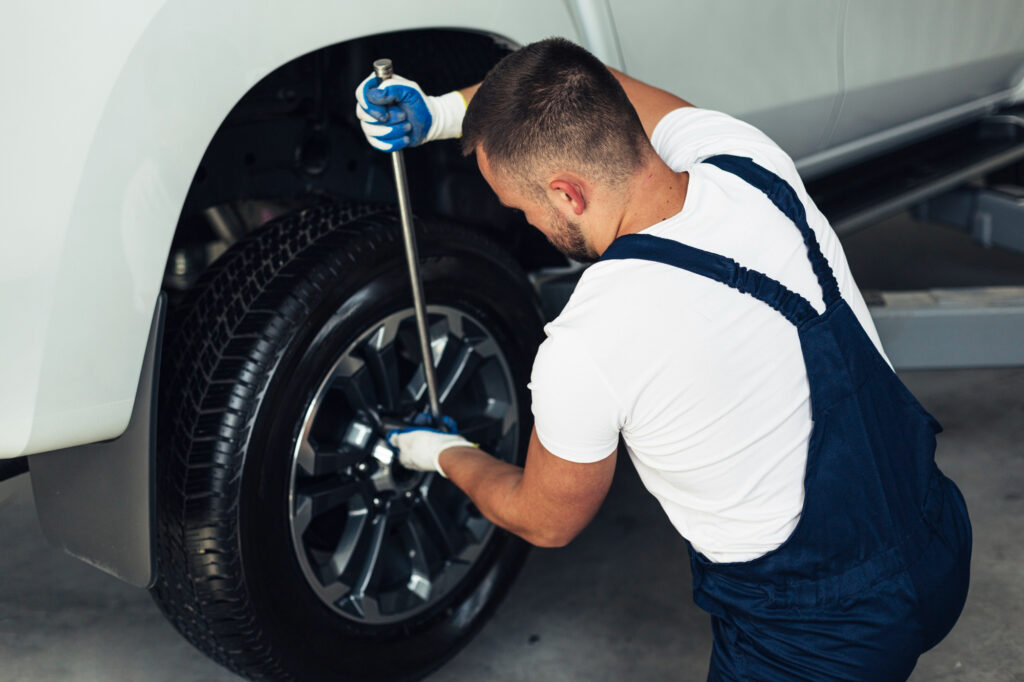
When it comes to car care, most drivers tend to focus on oil changes, brake checks, or engine tune-ups. While these are all essential, one area that often gets overlooked is tire maintenance. Your tires are the only part of your vehicle that actually make contact with the road, and neglecting them can lead to unsafe driving conditions, reduced fuel efficiency, and—worst of all—costly repairs down the line. With a little time and attention, you can extend the life of your tires and prevent larger issues from developing. Here’s how regular tire maintenance can keep your car running smoothly and save you money. Why tire maintenance matters Your tires are constantly under stress. Every bump, turn, and pothole affects them. Over time, even minor neglect can cause major problems. Bald tires, uneven wear, or improper inflation don’t just hurt your car’s performance—they increase your risk of accidents and expensive repairs. For example, worn-out tires can damage your suspension and alignment. Underinflated tires run hotter than they should, which can lead to blowouts or weakened sidewalls. Even small tire repairs, like fixing a slow leak, can become major if ignored. The good news? With proper tire maintenance tips and consistent care, these issues are almost entirely preventable. Key tire maintenance tips every driver should follow Check tire pressure regularly Tire pressure is one of the easiest things to maintain, but it’s also one of the most overlooked. Driving with underinflated or overinflated tires can shorten their lifespan, reduce fuel efficiency, and put unnecessary strain on your vehicle’s components. Experts recommend checking your tire pressure at least once a month and before any long trip. Always refer to your vehicle’s owner’s manual or the label on the driver’s door jamb for the correct PSI (pounds per square inch). Inspect your tread depth Your tires’ tread provides the grip needed for safe braking and handling. If the tread is too shallow, your tires won’t have the necessary traction, especially in wet or slippery conditions. You can use the “penny test” to quickly check tread depth. Place a penny into the tread with Lincoln’s head facing down. If you can see the top of his head, it’s time to replace your tires. Rotate your tires on schedule Tire rotation helps distribute wear evenly across all four tires. Without it, certain tires will wear out faster than others, affecting handling and potentially damaging your suspension. Most experts recommend rotating your tires every 5,000 to 7,500 miles. This simple step can extend the life of your tires and improve overall vehicle safety. Watch for uneven wear Uneven tire wear can indicate problems like improper inflation, worn suspension components, or misalignment. Catching this early can save you from more expensive tire repairs and potential part replacements. If you notice that one side of the tire is wearing faster than the other, schedule an inspection right away. Balance and align your wheels Tire balancing and wheel alignments are essential for maintaining a smooth ride and reducing wear. When your wheels are properly aligned, your tires contact the road evenly, preventing premature tread loss. If your steering wheel vibrates or your car pulls to one side, these are signs you might need balancing or alignment services. Repair small issues quickly A slow leak, a nail in the tread, or a minor sidewall bulge might not seem urgent, but these problems can quickly lead to full-blown tire failure. Professional tire repairs are often quick and affordable when addressed early. How proper tire maintenance saves you money Regular tire care does more than keep you safe; it also saves you money in the long run. Here’s how: Fewer replacements: Tires are a significant investment. By taking care of them, you’ll extend their lifespan and avoid buying new sets sooner than necessary. Better fuel efficiency: Properly inflated and aligned tires reduce rolling resistance, which means your car doesn’t have to work as hard to move forward. This improves gas mileage. Avoid costly repairs: Neglected tires can damage your vehicle’s suspension, brakes, and steering components. Preventative maintenance is far less expensive than replacing these parts. Reduced risk of accidents: Worn or poorly maintained tires increase the chance of blowouts and accidents, which can lead to expensive insurance claims and major repair bills. The benefits of professional tire services While there’s a lot you can do at home, having your tires professionally inspected and serviced is always a good idea. Certified technicians have the tools and experience to spot issues you might miss. Professional services like tire installation, balancing, alignment, and rotation can keep your car in peak condition. If you’re in the market for new tires, ordering the right set online and having them installed by experts ensures a perfect fit for your vehicle and driving needs. And don’t forget about warranties. Quality shops offer tire warranties that cover repairs, refunds, or replacements, giving you added peace of mind. Why buying your tires online makes sense In today’s busy world, convenience matters. With online tire shopping, you can browse top brands, compare options using real-world performance data, and get personalized recommendations based on your driving habits—all without leaving your home. Once you’ve made your selection, you can schedule professional installation in-store at a time that works for you. This streamlined process saves time and ensures you’re getting exactly the right tires for your car. Some providers even offer financing options, allowing you to purchase the tires you need without straining your budget. Transparent pricing and flexible payment plans make it easier than ever to keep your car safe and reliable. Take control of your tire care today Your tires play a crucial role in your vehicle’s safety, performance, and longevity. By following simple tire maintenance tips—checking pressure, rotating tires, inspecting tread depth, and scheduling professional services—you can avoid unnecessary tire repairs and keep your car running its best. Now is the perfect time to upgrade your tire care routine. Browse and order your next set of high-quality tires online, then schedule fast,
What Does a Wheel Alignment Service Include?
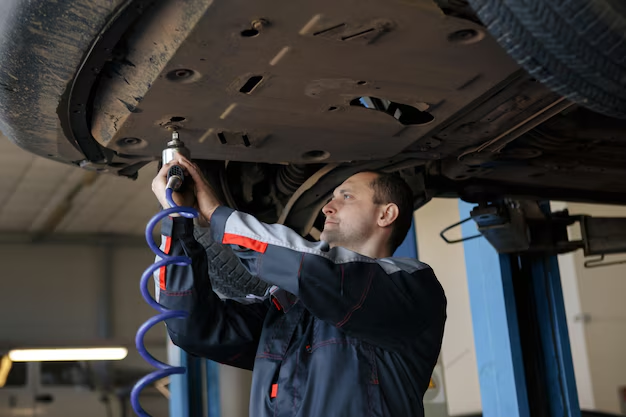
If you’ve ever felt your car pulling slightly to one side or noticed uneven tire wear, chances are you’ve wondered whether you need a wheel alignment. But when it’s time to get one done, many drivers aren’t exactly sure what the service includes. A wheel alignment service isn’t just about adjusting your tires to look straight—it’s a detailed process that ensures your vehicle handles properly, your tires last longer, and you drive safely and efficiently. Below, we’ll break down what actually happens during a wheel alignment, why it’s so important, and how it benefits your vehicle from top to bottom. What exactly is a wheel alignment? A wheel alignment is a precision adjustment to your vehicle’s suspension system that ensures your tires meet the road at the proper angles. This isn’t about turning the wheels themselves but rather aligning the angles of the suspension components that hold them in place. When done correctly, a professional alignment ensures your car drives straight and smooth without pulling, drifting, or vibrating unnecessarily. During the alignment process, technicians use advanced equipment to measure and adjust three key angles: Toe: The angle at which your tires point inward or outward when viewed from above. An incorrect toe can cause your car to “wander” or create uneven tire wear. Camber: The inward or outward tilt of your wheels when viewed from the front. Too much tilt can lead to one side of the tire wearing down faster than the other. Caster: The forward or backward tilt of your steering axis when viewed from the side. Correct caster helps your car track straight and return to center after turns. Some alignments also include a thrust angle check, which ensures all four wheels are perfectly aligned with each other and the vehicle’s centerline. This step is vital for cars with four-wheel or all-wheel drive. What does the wheel alignment service include? A professional wheel alignment service is far more than a quick tweak with a wrench. Modern shops use computer-guided alignment machines to ensure precise results. Here’s a closer look at what’s typically included: Initial inspection The technician begins by inspecting your tires, suspension components, and steering system. If they notice worn-out parts—like ball joints, tie rods, or bushings—those issues may need to be fixed before the alignment can be done. A bad suspension component can throw off alignment and make the service ineffective. Tire and wheel check Tires must be properly inflated and in good condition for an alignment to work as intended. The technician checks tire pressure and tread depth, ensuring there aren’t major defects like bulges or excessive wear that would compromise the process. Computerized measurements The car is placed on an alignment rack where sensors and cameras measure wheel angles with extreme accuracy. This data is compared to the factory alignment specifications for your specific make and model. Adjustments Using the machine’s feedback, the technician adjusts the toe, camber, and caster angles until they match factory recommendations. Depending on your vehicle, adjustments may involve loosening bolts, adding shims, or repositioning suspension components. Steering wheel centering The steering wheel should be perfectly centered when you’re driving straight. The alignment process includes making sure your wheel isn’t tilted to one side, which can cause unnecessary stress and poor handling. Final check and test drive Once adjustments are complete, the technician re-measures everything to confirm the alignment is correct. Some shops also take the vehicle for a brief test drive to ensure the car tracks straight and handles properly. Why is wheel alignment so important? It’s tempting to think of alignment as a “nice-to-have” service, but it plays a critical role in your vehicle’s performance and safety. Here’s why it matters: Extends tire life: Misaligned wheels cause uneven tire wear, meaning you’ll be replacing your tires much sooner than necessary. Improves handling and safety: A properly aligned car responds better to steering input and maintains stability at higher speeds or in emergency maneuvers. Boosts fuel efficiency: Misalignment creates rolling resistance, which forces your engine to work harder and burn more fuel. Protects suspension components: Driving with poor alignment puts extra strain on shocks, struts, and other suspension parts, leading to premature wear and costly repairs. Signs you might need a wheel alignment If you’re wondering whether it’s time to schedule a wheel alignment service, watch for these common warning signs: Your car pulls to one side when driving straight The steering wheel isn’t centered You notice vibrations in the steering wheel Tires show uneven or rapid tread wear You’ve recently hit a pothole, curb, or other major road hazard It’s also a good idea to get your alignment checked after replacing tires or suspension parts, or at least once a year as part of regular maintenance. How long does a wheel alignment take? On average, a wheel alignment service takes about 45 minutes to an hour. If suspension repairs are needed before the alignment, it could take longer. Some vehicles—especially those with advanced or performance-oriented suspension systems—require more complex adjustments, which can also add time. How often should you get an alignment? Most experts recommend checking your alignment annually or every 12,000 miles, whichever comes first. However, you may need to schedule one sooner if you hit a major pothole, experience any of the warning signs above, or have new tires installed. Keeping your alignment in check is one of the easiest ways to protect your tire investment. Why choose a professional alignment service? While some DIY enthusiasts attempt to align wheels themselves, modern vehicles are too complex for guesswork. Professional shops use high-tech machines that can measure alignment angles down to a fraction of a degree. More importantly, certified technicians understand how to make precise adjustments for your vehicle’s unique suspension setup. At a professional tire and alignment shop, you’ll also benefit from a complete vehicle inspection. If there are underlying issues—like loose tie rods or worn bushings—they can be repaired at the same time, saving you from future problems. Pair your alignment with new
Debunking Common Myths About Tire Replacement and Wheel Alignment
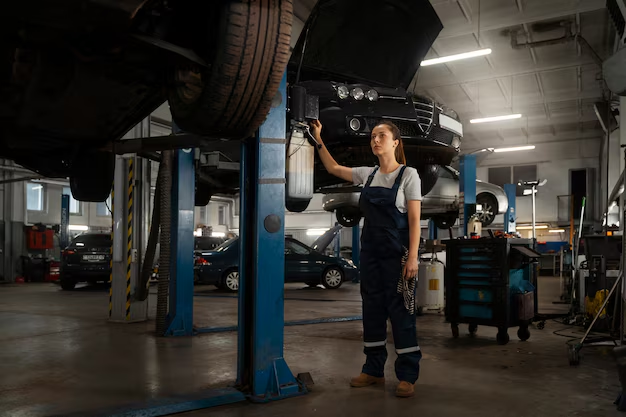
For many drivers, tire replacement and wheel alignment are two of those car maintenance tasks that feel mysterious, expensive, and easy to put off. After all, if your tires look round and your car still moves, what’s the big deal—right? Wrong. The reality is that what you don’t see with your tires and alignment can absolutely cost you—both in money and safety. But the internet is overflowing with half-truths, outdated advice, and outright myths that can make any car owner second-guess what’s really necessary. Let’s clear the air. Below, we’ll tackle some of the most common myths about tire replacement and wheel alignment, explain what’s really true, and help you make smart, confident choices that keep you safer on the road—and your wallet a little happier. Myth #1: If My Tires Look Fine, They’re Fine This is probably the most common tire replacement myth out there. Tires wear out gradually—so gradually that the average driver can easily overlook how much performance and safety they’re losing. Most people just eyeball their tires for tread depth. But the truth is, a tire can look like it has some tread left and still be well past its prime. Rubber hardens with age, and tires start losing grip long before they look bald. The National Highway Traffic Safety Administration recommends replacing tires when tread depth hits 2/32 of an inch. But many experts say that’s far too low for wet conditions—your stopping distance can nearly double compared to new tires. Also, tire age matters. Even if you don’t drive much, the rubber compounds break down over time. Many manufacturers recommend replacing tires every six years, regardless of how they look. Myth #2: You Only Need to Replace One or Two Tires at a Time This myth seems budget-friendly—until it isn’t. Sure, you can replace just one or two tires, but it can lead to problems down the road. Modern vehicles—especially all-wheel drives—are designed to operate with tires that have equal tread depth. Mixing old and new tires can cause uneven wear, poor handling, and even damage your drivetrain. Replacing all four tires at once ensures that your tires wear evenly and that your car handles as it was designed to. It’s also a perfect time to get a wheel alignment to protect your new investment. And if cost is a concern, keep an eye out for seasonal promotions that help you save when you buy four tires. (Hint: we’ve got you covered on that front—more on this below.) Myth #3: Wheel Alignment Is a One-and-Done Service Many drivers think alignment is a one-time fix—get it done once, and you’re good forever. Not true. Your car’s wheels can get knocked out of alignment by everyday hazards: potholes, curbs, rough roads, and even minor fender benders. Misalignment doesn’t fix itself—it quietly causes your tires to wear out faster and your car to handle poorly. Regular alignment checks help catch these issues early. Think of it like a dental cleaning: you wouldn’t skip brushing just because you went to the dentist once, right? Keeping your wheels in spec protects your tires, your suspension, and your wallet. Myth #4: Wheel Alignment Is Just About the Front Wheels This is another common misunderstanding. Years ago, front-end alignments were the norm because most vehicles were rear-wheel drive with simple rear suspensions. But today, many cars and crossovers have independent rear suspensions or are all-wheel drive. This means that all four wheels can—and often do—require alignment. A four-wheel alignment adjusts the angles of all wheels to match factory specs. This ensures your car tracks straight, your steering wheel is centered, and your tires wear evenly. So if your shop recommends a four-wheel alignment, they’re not upselling you—they’re doing you (and your tires) a favor. Myth #5: I’ll Know I Need an Alignment Because My Car Will Pull to One Side Sometimes, yes. But not always. Pulling to one side is definitely a red flag, but misalignment can be subtle. Maybe your steering wheel isn’t centered when you’re driving straight. Or maybe your tires are quietly wearing unevenly on the inside or outside edges—something you might not notice until it’s too late. Routine alignments and regular tire inspections help you catch these small misalignments before they become big expenses. Think of it as cheap insurance for your tires and suspension. Myth #6: High-Quality Tires Don’t Need Alignment High-quality tires are a smart investment, but they can’t protect themselves from misalignment. Whether you’re driving on budget rubber or top-of-the-line custom tires, poor alignment will chew them up faster than you think. And misalignment doesn’t care how fancy your tires are—it’ll wear them unevenly, reduce traction, and shorten their lifespan. To get the best performance out of your tires, pair them with a professional alignment every time you replace them. Myth #7: Online Tire Shopping Is Risky In the past, many drivers avoided buying tires online because they worried about getting the wrong size, dealing with complicated installation, or missing out on warranty coverage. Today, that’s no longer the case. Reputable shops let you shop online for tires from top brands, see exactly what fits your car, and book your installation at a local certified shop—all in one place. You get the best of both worlds: online convenience, plus expert installation and service that protects your investment. And you can often score exclusive online deals that help you save even more when buying four new tires. Why the Right Tires and Proper Alignment Matter Your tires are the only thing connecting your car to the road. Every mile you drive depends on them. Worn tires with poor alignment don’t just wear out faster—they compromise your traction, braking, fuel economy, and even your suspension. When your wheels are correctly aligned, your tires last longer, your ride is smoother, your fuel economy improves, and your car handles the way it was engineered to. Replacing your tires on time and pairing them with a proper alignment isn’t just good maintenance—it’s peace of mind every time you
How Poor Wheel Alignment Can Affect Your Car’s Fuel Efficiency
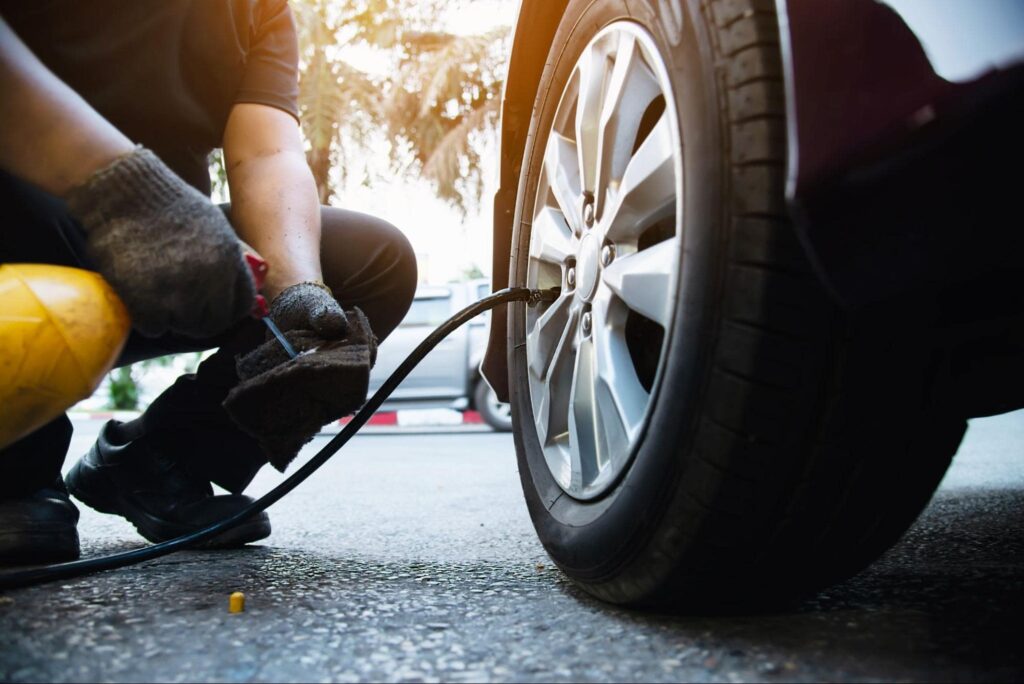
How Poor Wheel Alignment Can Affect Your Car’s Fuel Efficiency Most drivers don’t give much thought to wheel alignment—until their car starts to pull to one side, the steering wheel vibrates, or the tires wear out unevenly. But poor wheel alignment doesn’t just affect how your vehicle handles. It can quietly drain your wallet every time you stop at the pump. Fuel efficiency impact is something every driver wants to maximize, especially with fuel prices bouncing around like a yo-yo. If your car’s wheels are out of alignment, your vehicle could be wasting more fuel than you realize—and that adds up over time. So, what exactly is wheel alignment, how does it go out of whack, and why does it have such a big effect on your car’s fuel economy? Let’s break it down in plain English. What is Wheel Alignment, Really? At its core, wheel alignment is about setting your wheels at precise angles so they point in the exact directions they’re supposed to. Automakers engineer your vehicle’s suspension and wheels to work together perfectly—when everything lines up, your car tracks straight, handles predictably, and the tires make even contact with the road. Alignment adjustments come down to three main angles: toe, camber, and caster. Toe is the direction your tires point relative to the centerline of the car. If you looked at your car from above, perfectly aligned wheels should be parallel. If the front edges of the tires point slightly in or out, that’s toe-in or toe-out—and either one, if not within spec, creates extra drag. Camber is the inward or outward tilt of your wheels when viewed from the front. Some negative camber is normal, but too much or too little means your tire isn’t making full, even contact with the road. Caster is the angle of your steering axis when viewed from the side of the car. It helps your wheels return to center after turning. When any of these angles drift out of factory spec, your tires start scrubbing or dragging instead of rolling freely. That’s where the fuel efficiency impact comes in. How Poor Alignment Wastes Fuel Think of your tires like shoes. If you drag your feet while walking, you wear down your shoes faster and you’re expending more energy than you should. The same goes for your car—misaligned wheels force your engine to work harder just to keep your vehicle moving forward. Here’s why: Increased rolling resistance: When your wheels aren’t aligned properly, they fight each other. Instead of rolling in sync, they can push or pull slightly against each other, creating extra friction. More friction equals more resistance, and that means your engine has to burn more fuel to overcome it. Uneven tire wear: Poor alignment chews up your tires unevenly. Bald spots and worn edges create less efficient rolling surfaces. Once a tire’s shape is compromised, it can’t maintain optimal traction or ride smoothly, forcing your car to consume more fuel. More corrections needed: When your car drifts or pulls because of misalignment, you’re constantly nudging the steering wheel to compensate. This extra steering means you’re wasting momentum and burning more fuel than necessary to keep a straight path. According to some industry estimates, misaligned wheels can reduce your fuel efficiency by up to 10%. It might not sound like much at first glance, but consider this: if you’re spending $250 a month on fuel, poor alignment could be quietly burning through $25 of that—every month. That’s money you could put toward more important things. What Knocks Wheels Out of Alignment? Even if your car was perfectly aligned when it left the factory, it won’t stay that way forever. Potholes, rough roads, curbs, and everyday driving all take their toll. Hitting a big pothole at speed is a classic wheel alignment killer. So is bumping a curb while parking. Over time, even normal wear on your suspension components can gradually push your wheels out of alignment. If you regularly drive on poorly maintained roads or in areas with harsh winters, your wheels are even more likely to go out of spec faster. Signs Your Wheels Are Misaligned So how do you know if you’re losing money at the pump because of bad alignment? Some signs are obvious; others sneak up on you. Here’s what to watch for: Your car pulls to one side: If you’re driving on a flat, straight road but need to constantly tug the wheel to stay straight, that’s a classic sign. Your steering wheel is crooked: If the wheel isn’t centered when you’re driving straight, something’s off. You feel vibrations: Alignment issues often cause uneven tire wear, which can make your car shake or vibrate. Your tires wear unevenly: If you notice bald edges, cupping, or one tire wearing out much faster than the others, poor alignment could be the culprit. You hear unusual road noise: Sometimes you’ll hear more road noise from tires fighting the pavement unevenly. How Often Should You Check Your Alignment? There’s no hard-and-fast rule for when to get a wheel alignment, but most experts recommend having it checked at least once a year or every 10,000 to 12,000 miles—whichever comes first. You should also check it anytime you: Hit a major pothole Have suspension or steering work done Replace your tires Notice any of the warning signs above Keeping your wheels aligned not only boosts your fuel efficiency—it protects your tires, saves you money on premature replacements, and keeps your ride smooth and safe. How Proper Alignment Protects Your Tire Investment If you’ve ever replaced a full set of tires, you know they aren’t cheap. So why let poor alignment chew through them before their time? When your wheels are dialed in just right, your tires wear evenly, giving you maximum life out of every tread block. You’re not just saving fuel—you’re protecting your investment in high-quality rubber. Speaking of which, if you’re shopping for new tires, make sure to order from a trusted shop that offers expert installation
